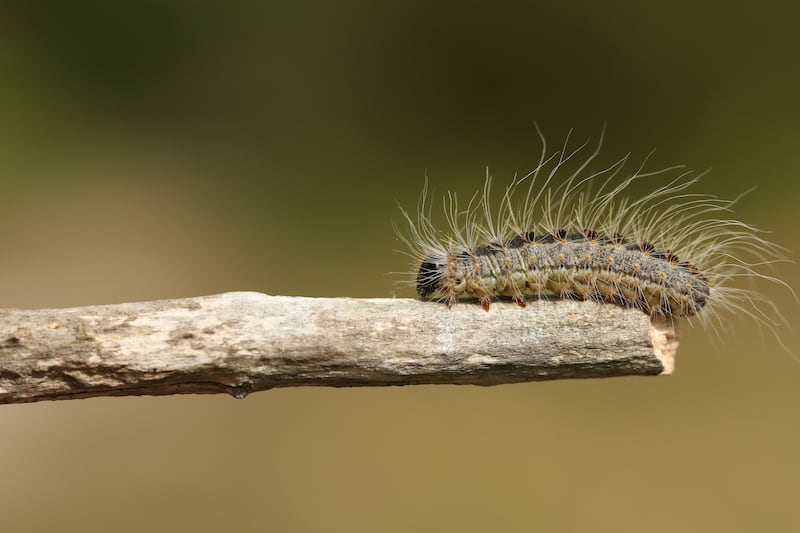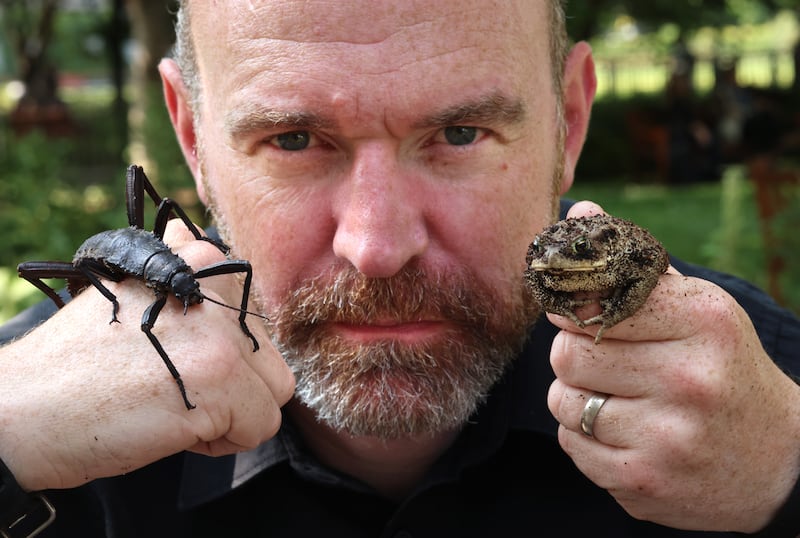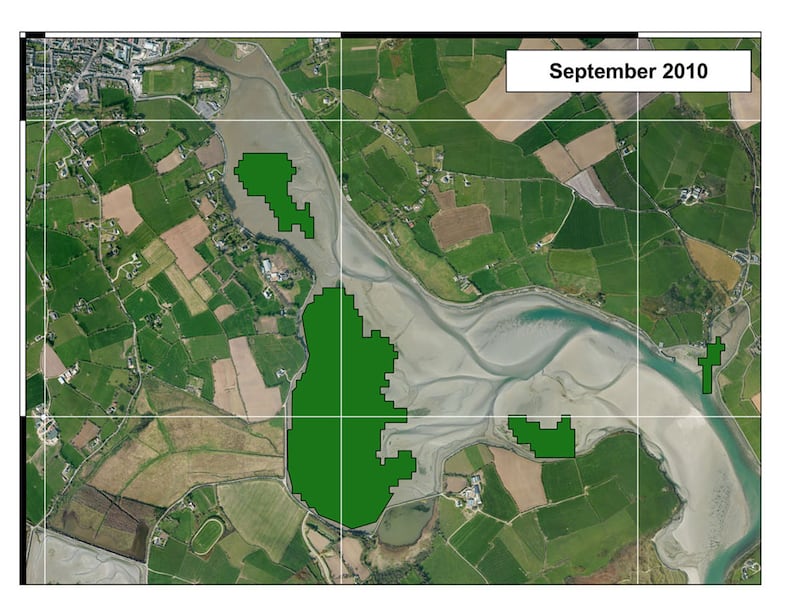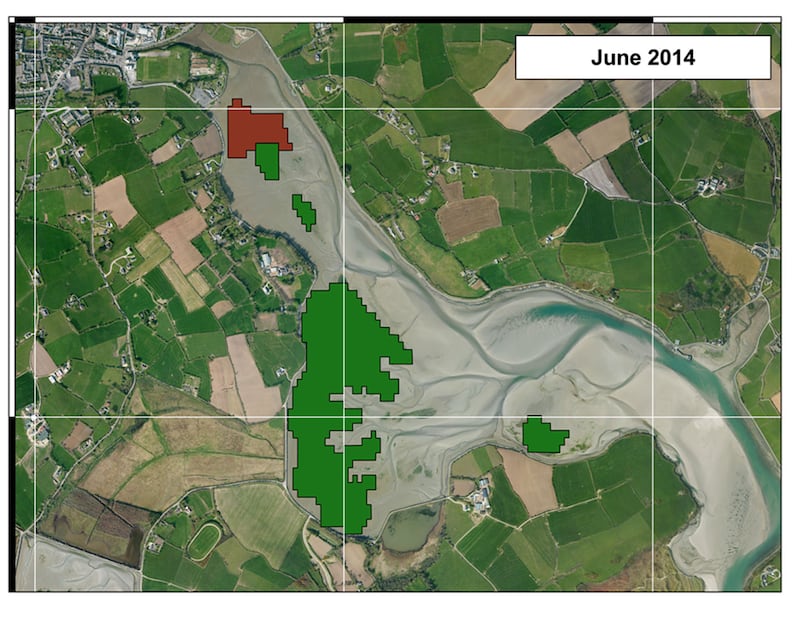Zoology researcher Collie Ennis likes the Jurassic Park maxim “life finds a way”.
He thinks it is an intelligible means of addressing Ireland’s future with invasive species, many unwelcome but increasingly likely to survive here amid the rising temperatures of climate change.
“I think the clock is ticking as to when something nasty will arrive,” Ennis says.
Last week, the Department of Agriculture issued a warning that an invasive species of moth caterpillar had been found in an unnamed Dublin housing estate.
RM Block
Thaumetopoea processionea, better known as the oak processionary moth, is indeed an unwelcome species, covered in tiny hairs that can cause skin rash, conjunctivitis and respiratory problems.
Scientists view the invasive path in four distinct stages: introduction, establishment, spread and impact. As a rule of thumb, about 10 per cent of what arrives will survive, probably more.

“There are certain species that are more susceptible to spreading disease and you just don’t want them. [But] if it gets warmer and it suits them, and we have milder winters, that’s what you’re looking at,” says Ennis, a research associate at Trinity College’s zoology department.
Even before any dramatic rise in temperatures, the emperor dragonfly, originally from African and Mediterranean areas, and the false widow spider, which spread to the UK from the Canary Islands, established themselves here.
“But they haven’t really affected us. Now you are talking about animals that might come in and start munching our crops or our foods; that’s a different thing altogether. This is the danger,” says Ennis.
“It’s bound to happen at some stage, that we are going to get something show up on our shores that we don’t want.
“We are so dependent on trade from other countries and our borders aren’t as well protected as nations that have learned their lessons in regards to invasive species – Australia and New Zealand being the prime examples of that.”
Nests and trees where the oak processionary moth was discovered in the Dublin housing estate were duly destroyed last week but, with media attention, they offered a good opportunity to raise public awareness to threats. It can sometimes seem an esoteric subject, but the Irish Famine’s potato blight was perhaps the more devastating example of an invasive species.
Prof Frances Lucy, an expert on the subject at Atlantic Technological University Sligo, agrees that it is a matter of time before something arrives to threaten food crops. In the past, she says, many species may not have survived in Ireland due to cool conditions.
“But if [one] came in now when we are having 24 degrees and it was at a time in its life when it was ready to reproduce it may very well become established. Climate change as a very basic principle will increase the chances,” Prof Lucy says.
She believes the Asian hornet could “easily” come into Ireland, bringing its “particularly unpleasant” sting and impact on native biodiversity with it.
“They could come in on wood, timber imports. We are not looking for these things,” she says, referencing a lack of interest in border controls.
“We should have been doing [border checks] 10 years ago. It is absolutely imperative.”

A spokesman for the National Parks and Wildlife Service (NPWS) said the ongoing development of a national management plan for invasive alien species is a priority, but did not specifically address concerns around border controls.
Such controls would not stop everything. At the University of Galway’s School of Natural Sciences, Dr Liam Morrison and Dr Ricardo Bermejo are studying the spread of invasive seaweeds in Irish coastal waters and estuaries in the context of climate change.
There are two types of seaweed spread: the movement of relatively nearby species, and the importation of others from further away due to human activity such as shipping. Gracilaria vermiculophylla, an invasive species of seaweed, is thought to have arrived in Ireland on oyster boats from Japan.
New invasive species that manage to take hold could have far reaching consequences for everything from marine life to coastal erosion and carbon storage.
“With the increase of temperatures in Ireland we are expecting a lot of species to arrive,” said Dr Bermejo, noting as an example a non-native seaweed known as laminaria ochroleuca, which was previously restricted to the warmer waters off the coast of Portugal and other areas of continental Europe, but is now in southern and even northwest Ireland.


Changes in varieties can affect fish stocks because seaweed acts as nursery ground for different marine life. Where some could decrease, others could benefit: sea bass and sea bream in northern Irish waters stand to thrive on new kinds of seaweed.
Dr Morrison and Dr Bermejo have been monitoring seaweed spread in the Clonakilty estuary in Cork which, in June 2014, began to show the emergence of gracilaria vermiculophylla. This type of monitoring will inevitably throw up more examples.
“It is huge,” says Dr Morrison of the effects of climate change. “[It includes] the degradation of the actual ecosystems and the associated services they provide such as nutrient recycling and carbon sequestration. It is huge, it is very hard to say and it is unknown.”
























